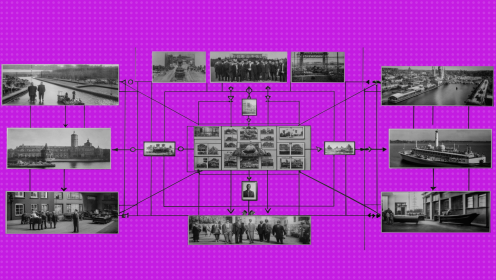I lead a startup LLC DDONE and a team of 36 people. 19 of them are the development department, which actively uses WEEEK in its work. We are developing mobile applications. Now we have 10 applications being developed in parallel. Recently, the Sharer application was released on the store - for buying shares in commercial real estate. And they created the Solarka portal - for buying large cars, as well as a useful resource for truckers who can search for the necessary spare parts on it, read the blog, and so on.
Then
My partner and I created our own startup. Gathered a development team. Initially, we decided that we needed a tool to manage the team.
Our goal is to release applications to stores. The goal breaks into projects, then boards, then tasks - you can’t keep it in your head, so we need a task manager.
It was necessary to introduce a service that would help maintain a backlog and track sprints by department and application. The biggest difficulty was that it was simply inconvenient for teams to use the tools with a loaded interface that are on the market. We tried to organize the work of teams in Wrike and Asana.
Wrike. I was stressed by the cost and quality of the service code. Bugs with notifications: notification comes in the evening, although the update happened in the morning, or does not come at all. Sometimes the service took a long time to load and a white screen hung instead of a task tree. Periodically threw out and had to re-login.
It turns out that Wrike is an expensive heavy machine, with a lot of bugs. For the money that this service asks for, I don’t need such a solution.
I also notice bugs in WEEEK, but I really like the speed of feedback from your team. I see that you are constantly working on the service and rolling out updates.
Plus there was not enough customization. There must be some kind of design.
WEEEK seems to drown for style - it provides such opportunities.
Asana. Pretty functional thing, but heavy. A loaded interface does not allow employees to quickly and independently understand the service. For example, when a beginner is onboarding, I need to allow time for him to learn how to use Asana - this is not at all fast.
WEEEK is easier in this regard, because it develops and our skill in using the service for process management develops along with it. It was great to be on that wave.
The non-personalized notification feed clogged the air very much. As an SEO, I had to start my morning by looking at all the inboxes - who, where, what comment was left. This is redundant work.
Asana was overloaded with add-ons and links. You can create a project, a board, a sub-board, and link it all together, as well as with some previous boards. For example, there is a simple task “Deploy a new version of the site”. But it can come across in several boards that are interconnected. If I'm tracking a task, then before I find it, I have to spend some time remembering "where do I need to go first to see this."
Asana does not have an Ideas section. Of course, I can submit my idea as a task, without a date or artist. But it turns out to be an eternal backlog.
WEEEK has a separate section for ideas.
We tried other products from Atlassian (Jira, Confluence, Trello), but after interviewing the team, I understood why and they were hard to implement.
The main disadvantages of previous services:
- loaded interface;
- bugs in the interface;
- spending time on employee training;
- expensive cost.
Now
Now I was finally able to cope with the rejection of doing tasks in the service of the team. Implemented WEEEK and told the team to transfer all their tasks from the head, notebooks, leaflets to this service.
Compared to Wrike, during the transition, the guys had almost no questions about how to start using the service. And it so happened that when I settled on this choice, the work went more productive. I believe that without this we would not have reached the releases of Sharer and Solar. We could also get stuck on the fronts or backs.
The main task of WEEEK is to maintain a backlog and track sprints by department and application. With your service, my teams started to backlog and understood what it was like to work in sprints. The work started. Transparency has increased, and, accordingly, communication between employees and efficiency have also increased.
Also, I am very glad that you have implemented the Knowledge Base. Now it is much easier for me to explain to the employee where to save useful information on processes. For example, to save a content upload guide, he just needs to click on one button and add a document there.
And I don't need to explain to him how to use Confluence. Now it has become more convenient to work - the Knowledge Base and the task manager are implemented in one service.

















